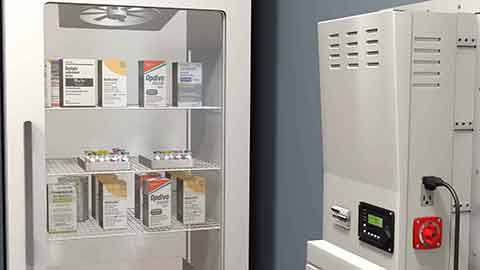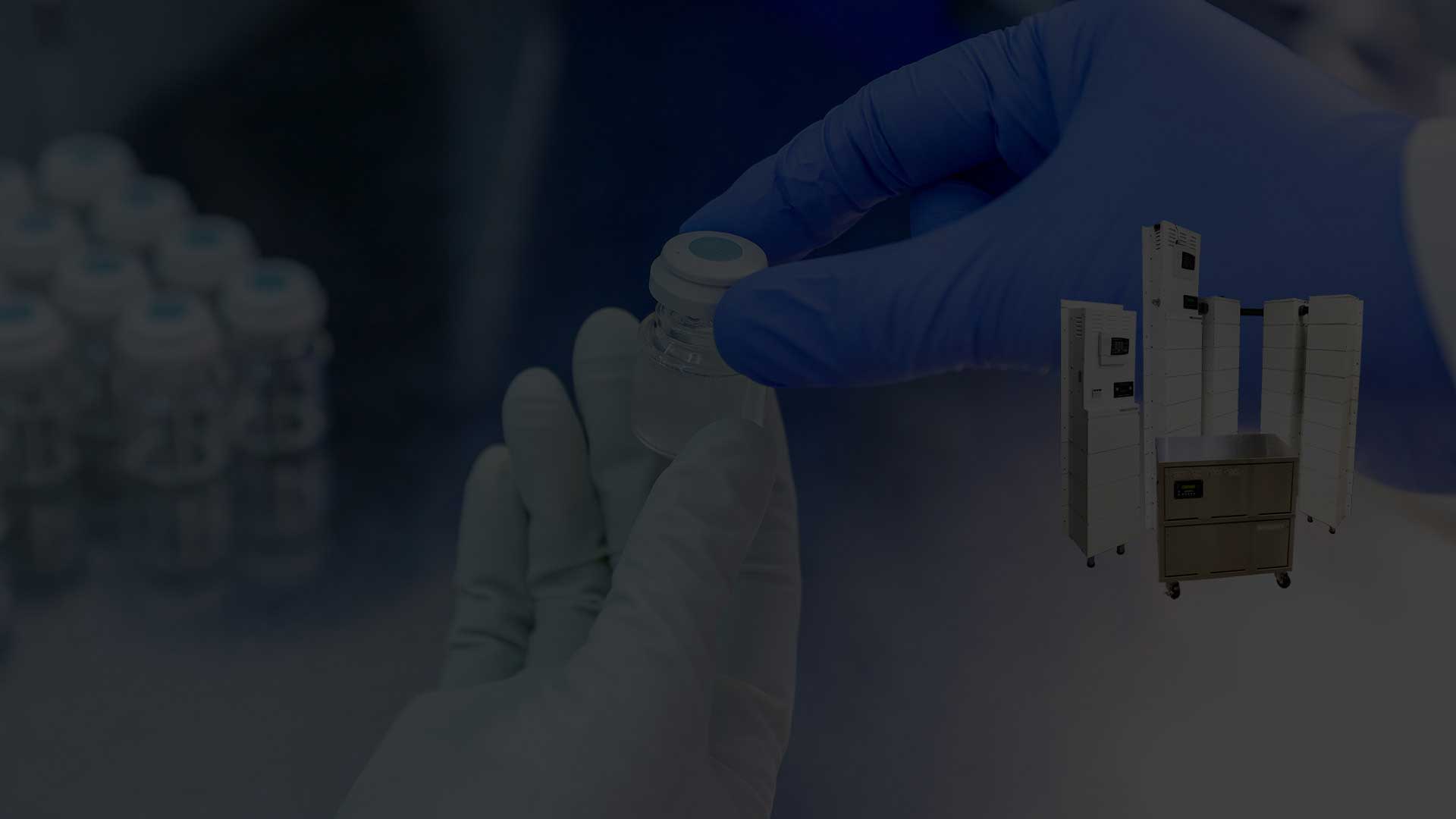Preparing Healthcare Facilities for 2022 Hurricane Season
Everything You Need to Know About Hurricane Season 2022
The 2022 hurricane season began on Wednesday, June 1, 2022, and will last through Wednesday, November 30, 2022. This year, meteorologists are expecting an above-average season. The National Oceanic Atmospheric Administration (NOAA) predicts a:
- 65% chance of an above-normal season,
- a 25% chance of a near-normal season,
- and a 10% chance of a below-normal season.
Furthermore, NOAA forecasts a likely range of 14 to 21 named storms with winds of 39 mph or higher. The NOAA expects 6 to 10 to become hurricanes with winds of 74 mph or higher.
Of those, 3 to 6 to become major hurricanes (category 3, 4, or 5; with winds of 111 mph or higher). Moreover, NOAA provides these ranges with 70% confidence.
This article discusses what you need to know on how to prepare a medical facility for a hurricane season.
Why Is the Outlook for the 2022 Atlantic Hurricane Season So Severe?
- The ongoing La Niña weather pattern
- La Niña enhances hurricane activity in the Atlantic basin by reducing vertical wind shear and trade winds and lowering atmospheric stability. Furthermore, experts forecast that La Niña will likely persist throughout the hurricane season.
- Warmer-than-average sea surface temperatures in the Atlantic Ocean and the Caribbean Sea
- Weaker tropical Atlantic trade winds
- An enhanced West African monsoon that supports stronger African Easterly Waves. These seed the strongest and longest-lived hurricanes during most seasons.
- Absence of an El Niño weather pattern, whose high wind shear typically tears hurricanes apart
Since the active hurricane season started, three named storms have occurred:
- Alex
- Bonnie
- and Colin
All were tropical storms. Alex formed a few days after the official start of the season (June 5-6) after it passed over the peninsula of Florida. Bonnie skirted very close to South America before re-emerging in the Pacific Ocean. Finally, Colin formed just off the coast of the Carolinas.
Hurricane Categories and Hazards
Hurricane categories are measured using the Saffir-Simpson Hurricane Wind Scale. This is commonly expressed as a 1 to 5 rating based on a hurricane’s maximum sustained wind speed. Per the scale, there are five hurricane categories.
● Category 1 hurricanes with dangerous wind speeds of 74 to 95mph and the ability to cause some damage
● Category 2 hurricanes with hazardous wind speeds of 96 to 110mph and the ability to cause extensive damage
● Category 3 hurricanes with speeds of 111 to 129mph and the ability to cause devastating damage
● Category 4 hurricanes with speeds of 130 to 156mph and the ability to cause catastrophic damage
● Category 5 hurricanes with speeds above 157mph and the ability to cause catastrophic damage
Note: This categorization only considers wind speeds. It does not consider the damage due to high winds, heavy rainfall, storm surge, coastal and inland flooding, rip currents, and tornadoes.
While hurricanes pose the greatest threat to life and property, tropical storms and depressions also can be devastating. The primary hazards from tropical cyclones (which include tropical depressions, tropical storms, and hurricanes) are storm surge flooding, inland flooding from heavy rains, destructive winds, tornadoes, and high surf and rip currents.
Storm surges happen when a storm’s winds generate an abnormal water rise, and they are historically the leading causes of hurricane-related deaths in the United States.
Together with large battering waves, storm surges can result in considerable loss of life and cause massive destruction along the coast. Furthermore, they can travel several miles inland, especially along bays, rivers, and estuaries.
The second leading cause of fatalities from landfalling tropical cyclones is flooding from heavy rains. These torrential rains typically cause flooding for hundreds of miles inland, which can persist for several days after the causative storm has passed.
Winds from a hurricane can destroy buildings and manufactured homes. In addition, signs, roofing material, and other items left outside can become flying missiles during hurricanes.
Tornadoes can accompany landfalling tropical cyclones, and these tornadoes typically occur in rain bands well away from the center of the storm. This means that even if your facility is not near the coast, you can still be impacted by the hurricane.
Dangerous waves produced by a tropical cyclone’s strong winds can pose a significant hazard to coastal residents and mariners. These waves can cause deadly rip currents, significant beach erosion, and damage to structures along the coastline, even when the storm is more than 1,000 miles offshore.
Best Practices When Preparing a Medical Facility for a Hurricane
For health care facilities, an average hurricane season can cause extensive damage to building structures, systems, and infrastructure. You may experience utility interruptions, such as power outages and water supply disruptions.
Thus, you must ensure that your building functions are maintained, and there is an SOP for evacuating your facility, should it become necessary.
The following tips will help you to better prepare for a hurricane event:
●Ensure that your facility’s infrastructure is solid enough to withstand the storms that come with hurricanes
Understand that your facility will become a beacon of hope as people seek shelter from the storm, and the safety and security you can provide will draw people to you.
● Ensure that communication lines remain open
Your staff will need alternate means of communication if telecoms go out, so you must prepare other options like radios and ensure your team is trained to use them, should it become necessary.
● Ensure you have an adequate emergency supply
Aim for at least four days’ worth of supplies on hand, ranging from bed linens to stocks in the blood center. Even then, you should have a plan for getting additional supplies to keep your facility running, if needed.
In addition, it would be best to have several emergency supply providers on standby who can make deliveries immediately before or after a hurricane, even if normal means of delivery are blocked.
● Keep yourself informed about the latest updates on hurricanes
This will help you to determine if you should evacuate your facility and when to do so.
● Have a plan for dealing with power outages
How to Prepare for a Hurricane Induced Power Outage
Power outage is one of the immediate fallouts of hurricanes. According to the US Energy Information Administration, the average outage time for customers in the United States was over 8 hours in 2020. This represents an increased outage time of more than double in 2013, when it was around 3.5 hours. The increase in outage times is almost entirely attributed to a similar increase in the number and severity of major weather events, including hurricanes.
However, many states experience average outage times much higher than 8 hours such as:
- New Jersey (16 Hours)
- Mississippi (25 Hours)
- Maine, Alabama, Iowa (29 Hours)
- Connecticut (44 Hours)
- Oklahoma (48 Hours)
- Louisiana (61 Hours)
Reliable backup power is essential to ensuring that valuable inventory such as vaccines, pharmaceuticals and biomedical research materials remain safe. These cold storage materials can quickly experience temperature excursions and become unusable mere hours after a power outage occurs.
For facilities who perform medical procedures such as office-based surgery centers and ambulatory surgery centers, a sudden weather event could leave them without the power they need to ensure patient safety.
In either case, a battery backup system can cost as little as 5-15% of what it would cost to either replace a faculty's medical inventory or what they may payout in a malpractice suit or increased insurance premiums.
Why Battery Backup Power Is The Perfect Solution for Extreme Weather Preparation
Battery backup systems provide a backup energy source that is:
- instant
- reliable
- and low maintenance
These three aspects make it an ideal power solution during extreme weather events because
- Power will engage even if no one is on site
- Staff will not need to find or purchase fuel in inclement weather
- Because a battery powered generator is installed inside, it is not exposed to the elements
- They can be built with as much or as little power as you think you'll need to survive an outage situation
This is in stark contrast to a fuel generator or portable generator (also called an inverter generator), which:
- are typically kept outside,
- could require fuel to be accessed or added during the storm
- take up to 15 minutes to engage
These factors make a battery powered generator the ideal "hurricane generator" solution.
Find Out What You'll Pay for Backup Power
Every system built fits directly with the need of every customer both in power and form factor. The quickest way to find a perfect system for you is to contact Medi-Products directly.
To speak to our product experts, engineers, and sales teams about quoting a system, and adding an alarm system contact us via:
Phone: 1.800.765.3237


